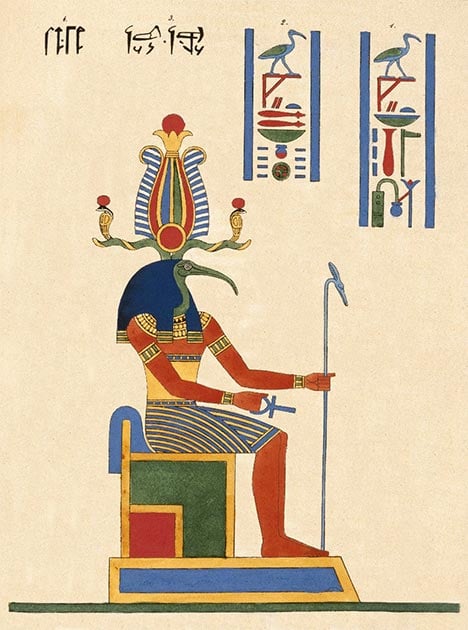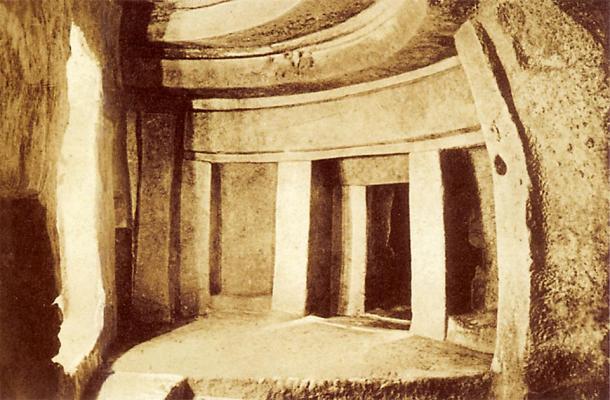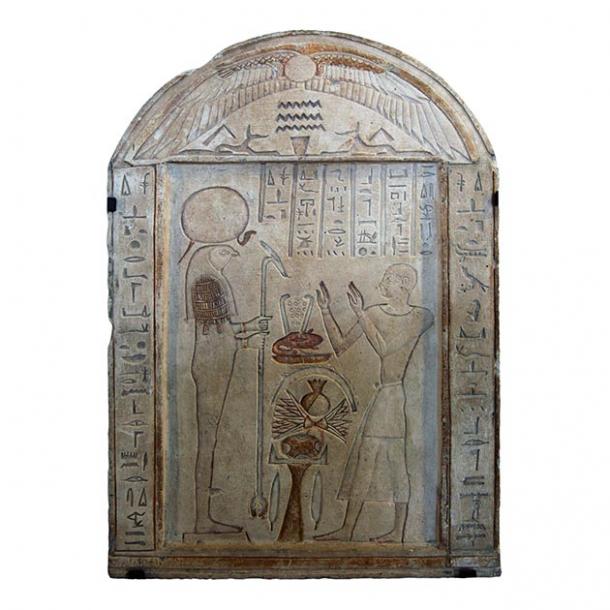https://www.ancient-origins.net/unexplained-phenomena/sanctuary-thoth-0014592
The Great Pyramid of Giza stands south of Cairo today but in the beginning it may well have been the Egyptian physical representation of the Sanctuary of Thought or The Sanctuary of Thoth.
The pretentious title “Sanctuary of Thought” might ring a bell for some if you are familiar with ancient Egyptian history. In the famous Westcar Papyrus , we find an interesting story about how Pharaoh Khufu obtained the sophisticated information necessary to build the Great Pyramid of Giza from the Heliopolitan Sanctuary of Thoth. If we examine this story, it becomes obvious that it contains a lot of useful information concealed as metaphor. No matter what you think, the Sanctuary of Thoth is a gateway to understanding a lot more about the incredible feats of the ancient Egyptians.
The intention of this article is to share this information because it confirms once more that the ancient gods were originally mathematical principles that were used by the megalith builders to induce hyperdimensional communication and for the building of “stargates.” The basic metaphor of these principles is found in the Heliopolitan Ennead or the Nine Creator Gods. (In my previous article as well as in my book Hallu-Cygns, you can read how these Nine Gods reflect the Nine Principles which, when synthesized in a sacred geometrical structure, open up the 1/10 th or 9-11 Gate of Consciousness.)
Merged photos depicting a copy of the ancient Egyptian papyrus commonly known as "The Westcar Papyrus," written in hieratic text.
(Keith Schengili-Roberts / CC BY-SA 3.0 )
The Westcar Papyrus And The Sanctuary Of Thoth
The Westcar Papyrus , in essence, is the story about how Pharaoh Khufu tries to find the secret chambers in the Sanctuary of Thoth. In the story, Khufu asks one of his sons to bring him an old magician known as Djehudi, who is 110-years old and knows the secret chambers in the Sanctuary of Thoth. When Djehudi arrives at court, Khufu interrogates him about the secret chambers. The old magician answers thus: “Please, I do not know their number, O King my Lord, but I know where it is. There is a chest made of firestone [often wrongly translated as “flint”] in a room called the “inventory” in Heliopolis. It is in this chest.”
The Egyptian pronunciation of Thoth is not fully known (neither is the name of the old magician) but can be reconstructed as Djhauti. Other forms of this name using older transcriptions include Djedi, Jehuti, Jehuty, Tahuti, and Tehuti. Therefore, it is obvious that the name of the old magician, Djedi or Djehudi refers to the Egyptian name of Thoth! And here’s why.

Thoth, the ancient Egyptian deity. (Jean-François Champollion / No restrictions )
In fact, there are three other historical figures whose name was Djehuti but none of these men lived early enough to be a potential candidate for being the “Djehudi” from the Westcar Papyrus . These are:
Djehuty: a general under Thutmose III in the 18th Dynasty;
Sekhemre Sementawy Djehuti: possibly the second king of the 16th Theban Dynasty;
Thuty (High Priest of Amun): Djehuty during the 18th Theban Dynasty.
So, can we conclude that the name of the old magician Djedi or Djehudi refers to the Egyptian name of Thoth? We know that Thoth was the inventor of the Egyptian script and the creator of hermetic science or Hellenistic mysticism. In essence, Thoth was the man who shaped Egyptian thought.
Although there seems to be no direct indication in the etymology of the word “thought” that connects it to the ancient Egyptian name Thoth, the meanings of both words are so related that it could not be a coincidence. Of course, this is a bold statement because it would imply that the creators of the Egyptian language and thought are somehow related to modern-day English language and thought. Is it therefore crazy or just coincidental to believe that the name Thoth is the root of the word “thought”?
In other words, the Sanctuary of Thoth becomes the Sanctuary of Thought. Therefore, I am suggesting that the secret chambers must be a metaphor for the hidden chambers or glands in the brain. Does this seem farfetched? Maybe, but the following certainly lends credence to my theory.

Photograph of the megalithic Hypogeum temple’s inner chamber in Malta, taken before 1910 AD. (Richard Ellis / Public domain )
When we continue to decode Khufu’s story in the Westcar Papyrus , we see that Djehudi (Thoth?) is 110 years old. The number 110 is a key length in the sacred geometry of the Great Pyramid (110 cubits is a fourth of its base length) and in many other megalithic structures like the Hypogeum in Malta. Indeed, researchers have found that the whole Hypogeum temple is designed to resonate at a frequency of 110 Hertz.
In 2008, a report was published by Dr Ian Cook of UCLA in which he describes his findings of an experiment in which he monitored regional brain activity in a number of healthy volunteers through exposure to different resonance frequencies. His findings indicated that, at 110 Hz, the patterns of activity over the prefrontal cortex abruptly shifted, resulting in a relative deactivation of the language center and a temporary shifting from left to right-sided dominance, related to emotional processing. This shift did not occur at other frequencies. This means that the Hypogeum’s oracle chamber was constructed in such a way as to induce mystical experiences and hyperdimensional consciousness. And please note that the Hypogeum was built 1500 years before the Egyptian pyramids!!!
Then there is the “chest made of firestone in the room called the Inventory in Heliopolis.” Reading this phrase, I immediately think of a “King’s Chamber” containing a sarcophagus, made of piezo-electric (firestone) granite and calcite, respectively. Only, here the chest of firestone inside the building called the Inventory is in Heliopolis, the religious heart of Egypt prior to the age of the pyramids.

Imenirdis worshiping Ra-Atum, a god said to be the repository of sacred knowledge. (Rama / CC BY-SA 3.0 )
We know that the most important temple in Heliopolis was the Temple of Ra-Atum or the Temple of the Phoenix, in which the sacred knowledge of the priesthood of Ra-Atum was stored (in its architecture and cosmic alignments). Therefore, the temple functioned as an “inventory of knowledge.”
In the center of this temple stood a granite (firestone) obelisk upon which rested an even more sacred object known as the Benben Stone . The Benben Stone is a mysterious conical stone (resembling a pinecone or a honeycomb) that symbolized the egg of the cosmic bird of creation or the Phoenix. The Phoenix was usually depicted as a grey heron, a migratory bird just like the ibis or the swan. It was believed that the first coming of the Phoenix marked the birth of a new age and the Benben Stone was its egg or divine seed.
Interestingly, the conical shape of the Benben Stone has been linked more than once with the conical shape of the pineal gland (just like the pine cone statue in the Vatican!), which is considered to be the “Seed of Thought,” or the divine seed of reality.
post continues at: https://www.ancient-origins.net/unexplained-phenomena/sanctuary-thoth-0014592
Recommend this post and follow The birth of
modern Man
https://disqus.com/home/forum/lifeofearth/



No comments:
Post a Comment
Stick to the subject, NO religion, or Party politics